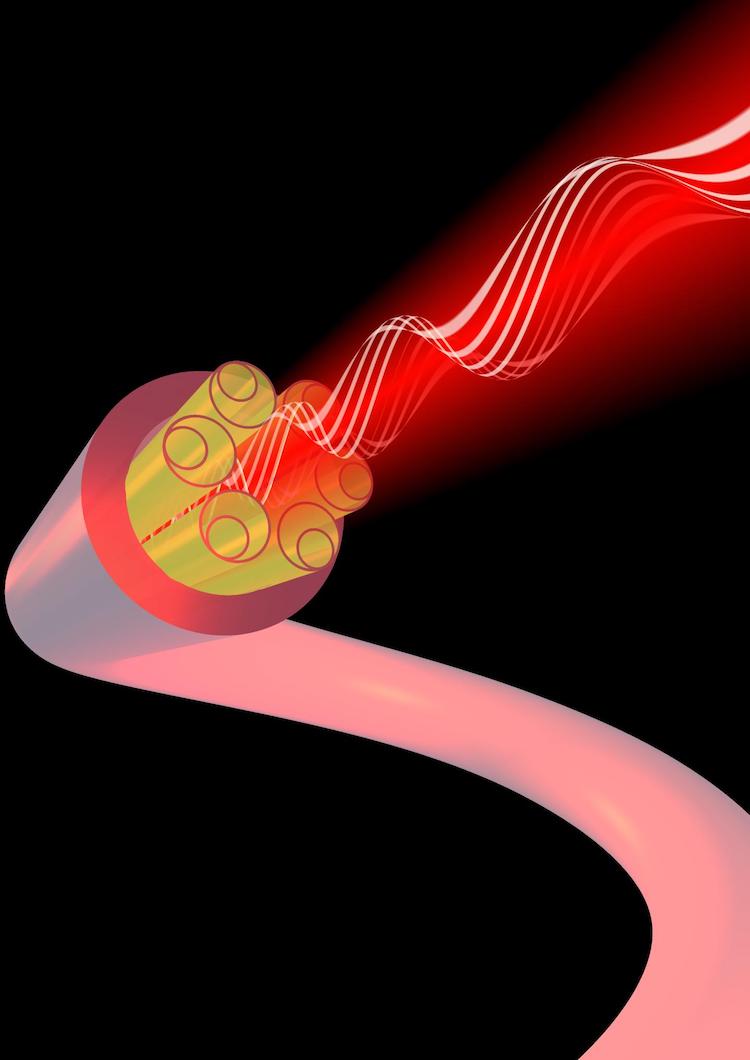Fibre-optic gyroscopes (FOGs) rely on a pair of laser beams travelling in opposite directions around the same fibre-optic coil. If the reference frame of the beams is not inertial – that is, if the gyroscope is rotating – the beam travelling counter to the direction of the rotation will experience a slightly shorter path. This path-shortening phenomenon is known as the Sagnac effect, and when the two light beams are made to interfere, their interference signal can be used to calculate the difference in path length. This, in turn, shows how the gyroscope (or the vehicle upon which it is mounted) changed its orientation.
Recirculating light
The sensitivity of FOGs can be enhanced by increasing the distance the light travels, for example by sending the light down a longer fibre-optic cable. Resonator fibre optic gyroscopes (RFOGs) exploit this principle by connecting the ends of the optical fibre to form an optical resonator. Because most of the light takes multiple trips around the fibre coil, RFOGs are more sensitive than simple FOGs, and any rotation-induced difference in path lengths manifests itself as a difference in the resonance frequencies in each direction.
Certain nonlinear optical effects can, however, degrade an RFOG’s performance. Identifying optical fibres that are immune to such effects has proved challenging, says project leader Glen Sanders, adding that he and his team at Honeywell International had previously examined whether hollow-core fibres that confine light in a central or gas-filled void might overcome the problem.
Even fewer nonlinear effects
In the latest study, which appears in Optics Letters, researchers co-led by Austin Taranta of the University of Southampton in the UK employed a type of hollow-core fibre known as a nodeless anti-resonant fibre (NANF). This type of fibre shows even fewer nonlinear effects than other hollow-core fibres, and it also has a low optical attenuation, which improves the quality of the resonator because the intensity of light remains steady over a longer propagation distance. Indeed, NANFs have the lowest optical loss of any hollow fibre – and for many parts of the electromagnetic spectrum, the lowest loss of any optical fibre, Taranta says.
Sanders adds that using a NANF eliminates optical errors caused by effects such as backscattering, polarization coupling and modal impurities, all of which can produce errors or extra noise in the gyroscope. “Eliminating these effects allows the light to travel along a single path through the fibre, a prerequisite for RFOGs,” he explains.

Optical gyroscope on a chip can detect Earth’s rotation
The Honeywell researchers tested their new gyroscope by mounting it on a stable static pier, which eliminates all rotation effects apart from the Earth’s rotation. This allowed them to determine that the “bias stability” for the instrument is just 0.05 degrees per hour, for observation times between 1-10 hours. This is 500 times better than previous measurements on hollow core fibre-based RFOGs for periods of longer than an hour, and close to the level required for civil aircraft navigation, the researchers say.
The team now plans to build a prototype gyroscope with a more compact and stable configuration that employs the latest generation of NANFs.
